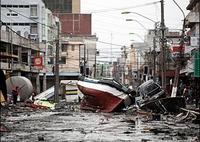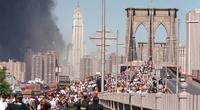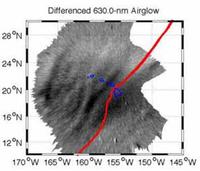-
LA-area hospitals prepare for the big quake
In earthquake-prone California, local hospitals and emergency responders are at hard at work preparing for the next big quake
-
-
Tweeting may help in disasters
Social networks like Twitter cannot help prevent disasters, but can quickly correct misinformation resulting from false rumors, thus preventing possible further loss of lives
-
-
Evaluating California earthquake forecasts
The Southern California Earthquake Center held a competition among seven different earthquake forecasts; an analysis of the competition shows that earthquake prediction remains an imperfect science, but the best forecasts are about ten times more accurate than a random prediction; the findings should help researchers both develop better earthquake forecasts and improve their tools for assessing those forecasts
-
-
NIST offers comprehensive risk assessment guidance for federal information systems
NIST has released two new publications dealing with risk assessment; one is the authoritative source of comprehensive risk assessment guidance for federal information systems, the other, an update to a March 2011 publication, focuses exclusively on risk assessments
-
-
Tsunami-predicting software to help protect coastal communities

New software has been developed to help protect vulnerable coastal communities from the destruction of a tsunami; the mathematical model has created significant interest in the wake of the 2011 earthquake and tsunami in Japan six months ago
-
-
More than $2.1 billion in DHS preparedness grants announced
DHS announced the final allocation for twelve preparedness grant programs totaling more than $2.1 billion in federal grants; DHS grants were reduced by $780 million for the FY 2010 enacted level, nearly a quarter of FY 2010 DHS grant funding
-
-
Most Americans unprepared for disaster, survey finds

A new survey finds that most Americans are unprepared for major disasters and that they maintain a false sense of security with regard to what will happen if a major disaster or a terrorist attack took place; contrary to reality, almost one-third of respondents believed that during a major disaster, calling 911 would bring help within an hour, while 30 percent said they believed help would come within several hours
-
-
Emergency cleanup plans for potential Cuban oil spill
With Cuba set to begin offshore drilling, the former head of the Environmental Protection Agency (EPA) is pressing the United States to immediately begin developing emergency plans to assist Cuba in the event of a major oil spill
-
-
Flood prediction tech simulates rivers 100x faster than real time
Researchers have applied advanced analytics to river systems, weather, and sensor data, to predict the Guadalupe River’s behavior more than a hundred times the normal speed; simulating thousands of branches at a time, this technology could help provide up to several days warning of a flood, allowing more time for disaster prevention and preparedness
-
-
Hurricane Irene begins to pummel North Carolina, East Coast braces
Rain from the outer edges of Hurricane Irene has already begun hitting North and South Carolina’s coast and federal officials are urging residents up and down the East Coast to prepare; Irene is expected to affect much of the East Coast from as far south as the Carolinas to Massachusetts in the north
-
-
Purdue helps Chicago prepare for disasters
To be better prepared for a major natural disaster or a terrorist attack, seventeen counties near Chicago, Illinois have banded together to create a disaster preparedness plan with the help of Purdue University and the University of Illinois, Chicago
-
-
Napolitano addresses Public Private Partnership conference
DHS secretary Janet Napolitano spoke to the attendees and reiterated the private sector’s role as an important partner in strengthening the homeland security enterprise better to defend against evolving threats, including disasters
-
-
Studying disasters in order to prepare for them
Disaster Research Center scientists study the world’s worst disasters in hopes of saving more lives in the future; one of the center’s experts says that disaster planning is constantly changing: “As we have a combination of new threats that face us — natural and technological — as we have changes in climate, as we have changes in population density, in where people are living, people are put at risk and new issues are created”
-
-
Method for early detection of tsunami found

Researchers, for the first time, have recorded an airglow signature in the upper atmosphere produced by a tsunami; the signature, caused by the 11 March earthquake that devastated Japan, was observed in an airglow layer 250 kilometers above the Earth’s surface; it preceded the tsunami by one hour, suggesting that the technology could be used as an early-warning system in the future
-
-
Louisiana parish plans extreme weather alert system
Emergency officials in Ouachita Parish, Louisiana are considering installing warning sirens that would alert residents of dangerous weather; officials hope to install sixty towers throughout the Parish; authorities are currently conducting feasibility studies to determine if installing the sirens is practical and a financial possibility
-
- All
- Regional
- Water
- Biometrics
- Borders/Immig
- Business
- Cybersecurity
- Detection
- Disasters
- Government
- Infrastructure
- International
- Public health
- Public Safety
- Communication interoperabillity
- Emergency services
- Emergency medical services
- Fire
- First response
- IEDs
- Law Enforcement
- Law Enforcement Technology
- Military technology
- Nonlethal weapons
- Nuclear weapons
- Personal protection equipment
- Police
- Notification /alert systems
- Situational awareness
- Weapons systems
- Sci-Tech
- Sector Reports
- Surveillance
- Transportation
Advertising & Marketing: advertise@newswirepubs.com
Editorial: editor@newswirepubs.com
General: info@newswirepubs.com
2010-2011 © News Wire Publications, LLC News Wire Publications, LLC
220 Old Country Road | Suite 200 | Mineola | New York | 11501
Permissions and Policies
Editorial: editor@newswirepubs.com
General: info@newswirepubs.com
2010-2011 © News Wire Publications, LLC News Wire Publications, LLC
220 Old Country Road | Suite 200 | Mineola | New York | 11501
Permissions and Policies
